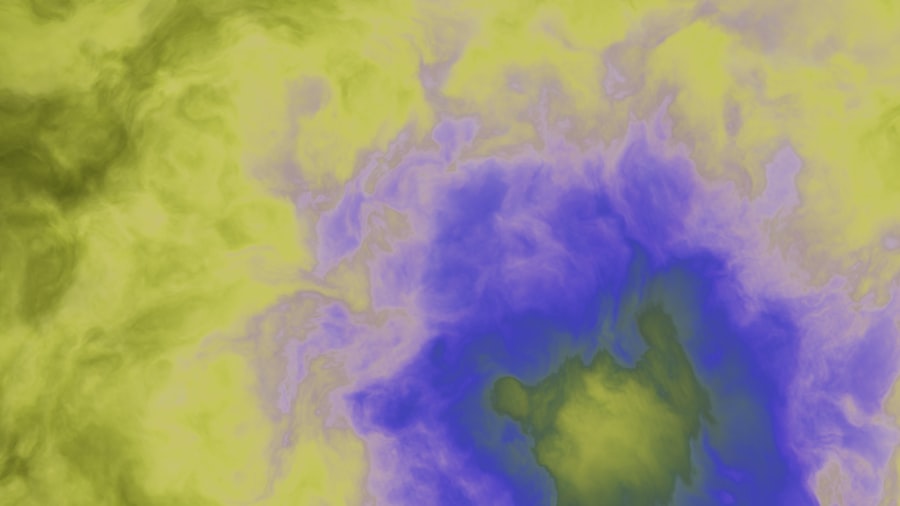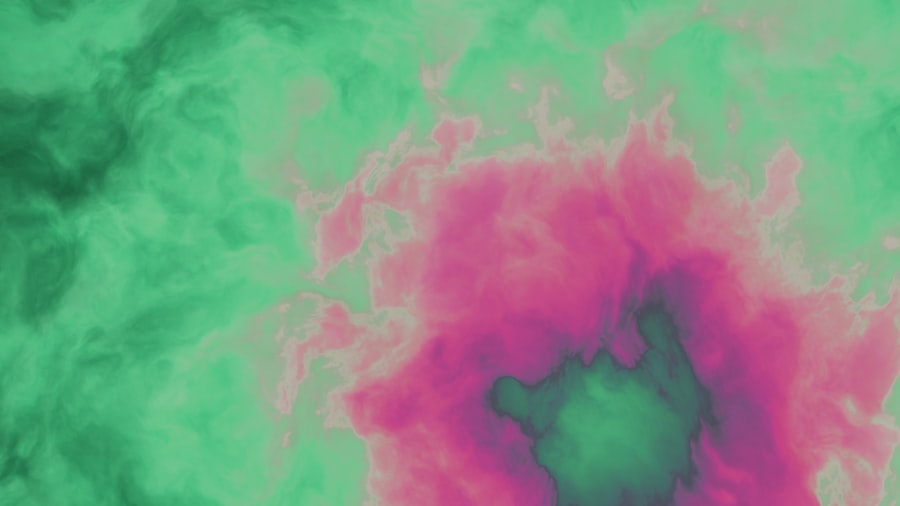Solar storms, also known as geomagnetic storms, are disturbances in the Earth’s magnetosphere caused by solar activity. These phenomena arise from the Sun’s dynamic nature, particularly during periods of heightened solar activity, such as solar flares and coronal mass ejections (CMEs). Solar flares are intense bursts of radiation that occur when magnetic energy that has built up in the solar atmosphere is released.
CMEs, on the other hand, involve the ejection of a significant amount of plasma and magnetic field from the Sun’s corona into space. When these charged particles collide with the Earth’s magnetic field, they can create a range of effects, from beautiful auroras to potentially disruptive impacts on technology. The study of solar storms is crucial for understanding not only the Sun’s behavior but also its influence on Earth and human activities.
As our reliance on technology increases, so does our vulnerability to the effects of solar storms. The potential for disruption to power grids, communication systems, and satellite operations makes it imperative to monitor solar activity closely. Understanding the mechanisms behind solar storms and their potential impacts can help mitigate risks and enhance preparedness for future events.
Key Takeaways
- Solar storms are powerful bursts of energy from the sun that can have significant impacts on Earth and space technology.
- Potential impacts of solar storms on Earth include disruptions to power grids, GPS systems, and communication networks.
- Solar storms are detected using a variety of tools, including satellites, ground-based observatories, and space weather monitoring systems.
- Precautions for Earth and spacecraft include implementing geomagnetic storm alerts, shielding sensitive equipment, and developing contingency plans for power outages.
- Historical solar storm events, such as the Carrington Event of 1859, serve as reminders of the potential severity of solar storm impacts.
Potential Impact on Earth
The impact of solar storms on Earth can be profound and multifaceted. One of the most immediate effects is the disruption of radio communications. High-frequency radio waves can be absorbed or reflected by the ionosphere, which is altered during solar storms.
This can lead to blackouts in radio communications, affecting aviation, maritime operations, and emergency services that rely on these systems for coordination and safety. Moreover, solar storms can induce geomagnetic currents in power lines, leading to voltage fluctuations and even transformer damage in electrical grids. The 1989 geomagnetic storm that struck Quebec is a prime example; it caused a nine-hour blackout affecting millions of people.
Such events highlight the vulnerability of modern infrastructure to solar activity. Additionally, satellites in orbit are at risk during solar storms due to increased radiation exposure, which can damage sensitive electronics and disrupt satellite operations. This can have cascading effects on global positioning systems (GPS), weather forecasting, and telecommunications.
How Solar Storms are Detected

Detecting solar storms involves a combination of ground-based and space-based observatories that monitor solar activity continuously. Instruments such as the Solar Dynamics Observatory (SDO) and the Solar and Heliospheric Observatory (SOHO) provide real-time data on solar flares and CMEs. These satellites capture images of the Sun in various wavelengths, allowing scientists to observe changes in solar activity and predict potential impacts on Earth.
Ground-based observatories also play a critical role in monitoring geomagnetic activity. Magnetometers measure variations in the Earth’s magnetic field caused by solar storms, providing valuable data for understanding the storm’s intensity and potential effects. Additionally, space weather forecasting centers, such as the National Oceanic and Atmospheric Administration’s Space Weather Prediction Center (SWPC), analyze data from multiple sources to issue alerts and warnings about impending solar storms.
This collaborative approach enables timely responses to mitigate risks associated with solar activity.
Precautions for Earth and Spacecraft
| Precautions | Earth | Spacecraft |
|---|---|---|
| Temperature Control | Protect from extreme temperatures | Insulate against temperature changes |
| Radiation Protection | Shield from harmful radiation | Use shielding materials to protect from cosmic radiation |
| Mechanical Stress | Design to withstand gravity and pressure changes | Build to endure launch and space conditions |
| Microgravity Effects | Consider impact on human health in space | Design systems to function in microgravity |
In light of the potential dangers posed by solar storms, various precautions have been developed for both terrestrial infrastructure and spacecraft operations. For power grids, utilities can implement protective measures such as installing geomagnetic disturbance (GMD) monitors and developing response plans to quickly address any disruptions caused by solar activity. Utilities may also temporarily reduce power loads during severe storms to prevent damage to transformers and other critical components.
For spacecraft, engineers design systems with radiation shielding to protect sensitive electronics from increased radiation levels during solar storms. Additionally, mission planners often schedule satellite operations to minimize exposure during predicted storm events. For instance, satellites may be placed in safe modes or temporarily shut down non-essential systems when a significant solar storm is forecasted.
These proactive measures are essential for ensuring the longevity and functionality of space missions.
Historical Solar Storm Events
Throughout history, several notable solar storm events have had significant impacts on Earth. One of the most famous is the Carrington Event of 1859, which was the most powerful geomagnetic storm on record. It was caused by a massive CME that struck Earth, resulting in spectacular auroras visible as far south as Hawaii and Cuba.
The event also disrupted telegraph systems across North America and Europe, causing sparks and fires in some cases. Another significant event occurred in 1989 when a geomagnetic storm knocked out power across Quebec, Canada. The storm induced strong geomagnetic currents that overwhelmed transformers in the power grid, leading to a blackout that lasted for several hours.
This incident underscored the vulnerability of modern electrical infrastructure to solar activity and prompted utilities to enhance their preparedness for future storms. More recently, in 2012, a CME narrowly missed Earth but was powerful enough to have caused widespread disruptions had it been directed toward our planet.
Current Solar Storm Forecast

As of October 2023, scientists continue to monitor solar activity closely as we approach the peak of Solar Cycle 25, which is expected to occur around 2025. This cycle has already shown signs of increased activity with a rise in sunspots and solar flares. The National Oceanic and Atmospheric Administration (NOAA) provides regular updates on solar weather conditions through its Space Weather Prediction Center (SWPC), offering forecasts that help various sectors prepare for potential impacts.
Current models suggest that we may experience more frequent and intense solar storms as we approach the solar maximum. These forecasts are based on historical data and real-time observations from satellites monitoring solar activity. The SWPC issues alerts for significant solar events, allowing industries reliant on technology to take necessary precautions ahead of time.
Expert Advice and Recommendations
Experts emphasize the importance of preparedness in mitigating the risks associated with solar storms. For individuals and businesses alike, having contingency plans in place is crucial. This includes ensuring backup power systems are operational and maintaining communication channels that do not rely solely on vulnerable technologies like satellites or power grids.
For government agencies and utility companies, investing in infrastructure resilience is vital. This may involve upgrading transformers to withstand geomagnetic currents or implementing advanced monitoring systems that provide real-time data on geomagnetic activity. Additionally, public awareness campaigns can educate citizens about the potential impacts of solar storms and encourage them to prepare emergency kits with essential supplies in case of prolonged outages.
Conclusion and Future Preparedness
As we continue to advance technologically, our dependence on electronic systems makes us increasingly susceptible to the effects of solar storms. The potential for disruption underscores the need for ongoing research into solar activity and its impacts on Earth. Future preparedness will require collaboration between scientists, government agencies, utility companies, and the public to develop comprehensive strategies that address both immediate risks and long-term resilience.
Investing in research to improve forecasting models will enhance our ability to predict solar storms accurately and respond effectively. Furthermore, fostering a culture of preparedness at all levels—from individual households to large organizations—will be essential in mitigating the impacts of future solar events. By understanding the nature of solar storms and implementing proactive measures, we can better safeguard our technology-dependent society against these powerful natural phenomena.


